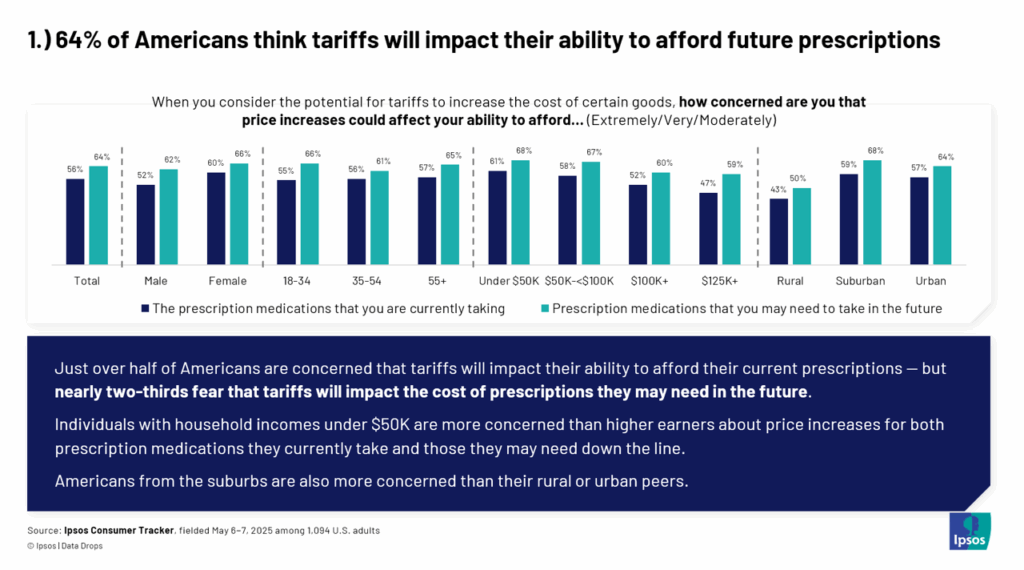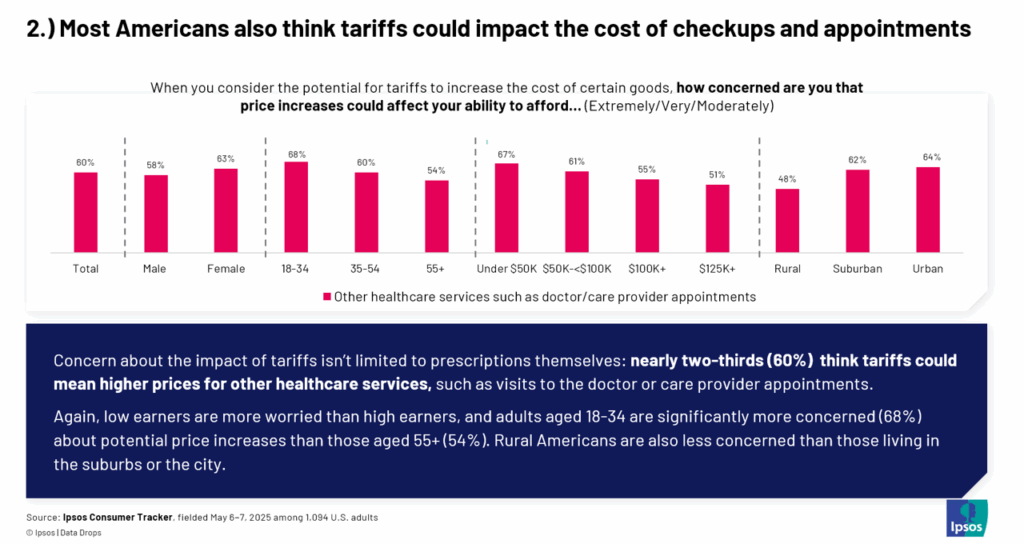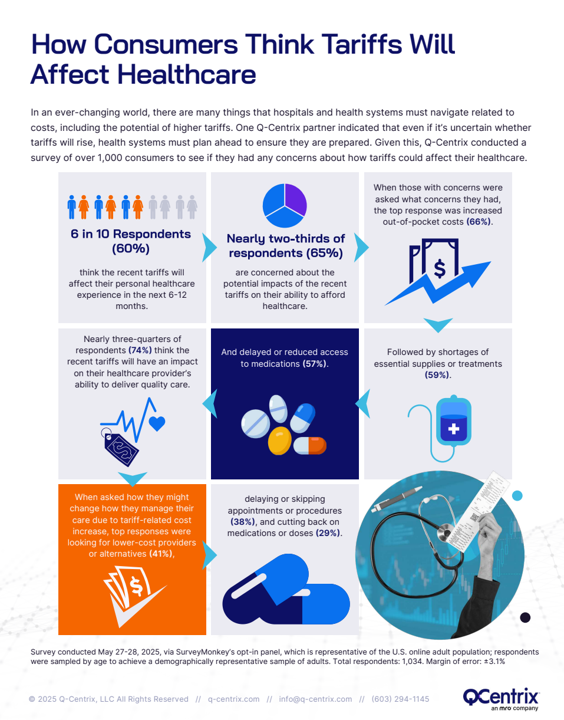HealthPopuli.com – Read More
Most Americans, thinking as health consumers, believe that tariffs could impact peoples’ ability to pay for costly prescription drugs and be priced out of paying for check-ups and medical supplies, based on results from two studies on consumers’ views on tariffs and their health care from Ipsos and Q-Centrix.

Ipsos’s consumer survey found that younger consumers, people earning lower incomes, and folks living in the suburbs feel even more stressed about tariffs’ impact on medical care — along with more people identifying as Democrats or Independent voters.

With the cost of prescription drugs a key political issue in Washington DC at the Federal level as well as for State Governors wrestling with the costs and coverage of Medicaid, most U.S. consumers foresee tariffs’ would raise the costs of prescribed meds and peoples’ ability to pay and access medicines. Even a majority of the wealthiest demographic is concerned about the tariff impact on Rx costs, as the bar chart illustrates, as well as more women than men,

Even the cost of check-ups and medical appointments could be affected by tariffs, two-thirds of U.S. consumers anticipate — again, more women than men, and more people earning lower incomes.

Now, check out results from QCentrix’s study which dovetail perfectly with Ipsos’s findings, in Consumers Share Concerns Related to Tariff Impacts on Healthcare, a summary of a study gathering Americans’ perspectives on how tariffs could affect peoples’ ability to afford medical care and prescription drugs.
The infographic from QCentrix summarizes the findings, noting that:
- 3 out of 5 Americans think tariffs will affect their personal health care experience in the next year
- Two-thirds of consumers are concerned about the impact of tariffs on the ability to afford health care, especially on out-of-pocket costs
- Shortages of essential drugs and supplies are also a concern when it comes to tariffs’ potential impacts on health care
- Personal responses to these tariff impacts include seeking lower-cost providers or settings, cheaper alternatives, and delaying or skipping appointments or prescriptions — that is, self-rationing care due to cost.
QCentrix polled 1,034 consumers in May for this study.

Health Populi’s Hot Points: Goldman Sachs reported this week that U.S. consumers had already borne about 22% of tariff cost impacts through June 2025, projecting that American consumers would bear 67% of cost increases later this year — that is, Goldman’s tea leaves predict that U.S. consumers will bear two-thirds of the price-increases due to tariffs’ impacts on imported goods everyday people buy and use, from home appliances and laptop computers to household products and specialty foods (in my home, for example in the second quarter of 2025, olive oil and certain forms of produce already hitting higher prices than we’ve ever seen in the U.S.).
This week we’ve heard local news reports about parents getting kids back-to-school shopping for higher-priced school supplies and clothing — for example, here from Detroit’s Fox News station, here reported in the Denver Post, and here more generally reported by the U.S. Chamber of Commerce.
Consider holiday shopping impacts felt later this third quarter 2025 and through Q425: perhaps people might only afford one or two dolls under the holiday tree, as President Trump described earlier this year warning U.S. consumers of the potential fiscal pinch of tariff impacts on mainstream American households and, in this case, young children.
While health care has been seen as fairly inelastic, economically speaking, meaning that people would tend to cut other line items of household spending versus prescription drugs, medical supplies, or visits to doctors — we have these two updates from Ipsos and QCentrix that could challenge our traditional thinking about health care elasticity of demand.
What’s newer this time around in our analysis is that there are more retail health-style options for health consumers to switch to as alternatives which might not have been available in, say 1988 in the Great Recession or even in the thick of the COVID pandemic lockdown period — no GLP-1 drugs via telehealth channels, fewer options for digital front-doors for primary care, less ability to order up supplies and healthy food via Instacart or Amazon Fresh, and so on.
I’ll be assessing this convergence of tariffs + health consumers = The New Elasticity of Consumer Demand for Health Care Alternatives over the coming months.
The post What U.S. Consumers Are Thinking About Tariffs’ Impacts on Health Care: Looking to Ipsos, QCentrix and Goldman Sachs appeared first on HealthPopuli.com.





